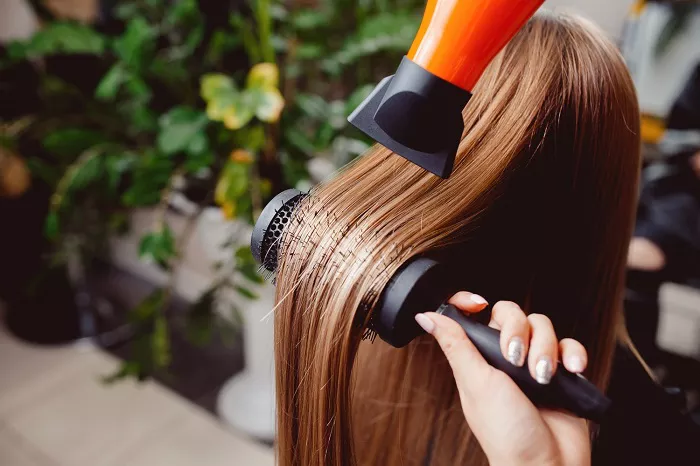As the holiday season begins, many Brits look forward to ditching their hairdryers after a day at the beach or pool. However, hair transplant specialist Yannis Giantzides, CEO of Manchester Hair Transplant Clinic, warns that air-drying wet hair can actually cause more damage from the inside out than blow-drying with controlled heat.
Giantzides explains that leaving hair wet for too long harms the cell membrane complex (CMC), the crucial structure that holds hair fibers together and maintains strength. “Hair is most vulnerable when it’s wet,” he says, “because water causes the hair to swell, putting pressure on the protective outer layer. When hair stays wet too long, the CMC becomes compromised, leading to weaker, more fragile hair prone to breakage and split ends.”
This insight challenges the common assumption that natural air-drying is always best for hair health. Research published in the Annals of Dermatology supports this, showing that naturally dried hair exhibits more CMC damage, whereas hair dried with controlled heat retains better structural integrity. While heat styling can cause minor surface damage, only air-drying was found to affect the deeper layers of hair.
With the rise of heatless styling methods popularized on platforms like TikTok (#heatlesscurls has over 314,000 posts), this advice may come as a surprise. Experts stress, however, that the healthiest approach is not to avoid heat entirely but to use it properly.
Giantzides recommends blow-drying on a medium heat setting, keeping the dryer about 15 cm away from the hair and moving it constantly to avoid overheating any one spot. For best results, gently blot excess water with a microfibre towel before applying a heat protectant spray.
He also advises against going to bed with wet hair, noting that sleeping on damp locks increases friction and breakage, causes tangles, and can even encourage fungal growth on the scalp.
People with dyed or chemically treated hair are particularly at risk from air-drying damage since these treatments weaken the hair’s protective layers. For these individuals, quick and gentle drying is essential.
That said, those with natural curls may benefit from air-drying during the day, as blow-drying can disrupt curl patterns and lead to split ends.
For those who prefer air-drying, Giantzides recommends minimizing the time hair stays wet by using a microfibre towel to absorb water immediately after washing, applying protective leave-in products, and ensuring air-drying happens during daylight hours—never overnight.
This expert advice highlights essential hair care tips and hair health advice that may reshape how you think about hair care steps, especially during humid or wet conditions.
Related Topics:
- Olaplex Launches Fine Hair Formulas – But Do They Deliver?
- Shakira Announces Launch of Debut Hair-Care Line, Isima
- Behind the Brand: Sacha Mitic on Sachajuan’s Philosophy of Simplicity and Effective Hair Care


